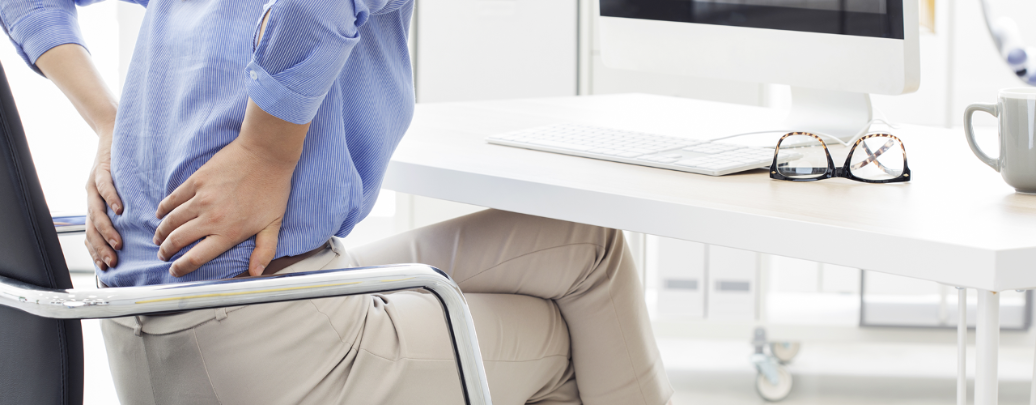Back pain is an extremely common condition, with at least 80% of Americans experiencing it in their lifetimes. This does not mean it’s something you should ever ignore, however. There are several different potential causes for chronic back pain, and it may be difficult to identify the source behind yours. It’s for this reason that conservative or minimally invasive treatments are usually recommended. While surgery may sometimes be the solution, it should be far from the first treatment you try. To help with back pain while determining the cause, the first steps you should be taking are conservative, non-invasive treatments.
Home Care for Back Pain
Don’t forget the RICE method when it comes to pain: rest, ice, compression, and elevate. Rest the injured or sore body part, and then apply ice (an ice pack or pack of frozen vegetables or fruit) for 20 minutes on, then 20 minutes off. Add compression with a firm elastic bandage. Elevate the injured part to keep swelling minimal. In the case of your back, lie on your back and prop your legs on top of a chair or bench. Lying on your side with a cushion tucked between your legs will help, too.
The very first thing you should do is rest your back 48 hours after you first notice pain and avoid any physical activity that could aggravate it. From there, see if you can increase your activity level. If you can, do so slowly and carefully. You should also apply heat or ice directly to the area in pain. Most specialists recommend icing for the first 48 to 72 hours and then applying heat.
Over the counter pain medication has been found to alleviate back pain. Acetaminophen (Tylenol) or a nonsteroidal anti-inflammatory drug like ibuprofen (Advil) or naproxen (Aleve) are generally the most recommended.
Physical Therapy for an Aching Back
While resting is key, it’s important to remain active. A moderate amount of physical activity will help maintain and improve your mobility, so start with a light workout plan. If you’re not sure what to do, talk to your doctor or physical therapist.
A physical therapist may have you do exercises that widen the spaces between your vertebrae and reduce pressure on nerves. You may also be advised to stretch your back and hip muscles, as well as do exercises to strengthen your abdominal muscles.
You could also try massage therapy as an additional way to ease the pain as you continue with your other treatments. Massages have been known to give temporary relief effectively. You can try simple self-massage exercises that are safe to do at home or see a professional.
Spinal manipulation therapy from a chiropractor, osteopathic physician, or physical therapist is another treatment to consider. Spinal manipulation is a common complementary treatment for both children and adults and has been used to treat several pain conditions, including sciatica, low-back pain, neck pain, and headaches.
It is also worth asking your doctor or physical therapist if they recommend any medical appliances. These can range from cushions, supports, traction devices, binders, specialized exercise products, and a transcutaneous electrical nerve stimulation (TENS) device.
Steroid Injections for Back Pain
An epidural steroid injection (ESI) is a common way to treat several forms of back pain. It is a trusted and often essential method of non-invasive treatment for lower back pain and sciatica. It involves injecting a local anesthetic and a steroid medication directly into the epidural space around the spinal cord and nerve roots.
Lifestyle Modifications
Some changes to your daily habits and lifestyle can go a long way to stopping, lessening, or preventing back pain. Practicing good posture can take the pressure off your lower back. Stand and sit with a straight back, and avoid sitting up in bed.
Exercise will also be a huge help. Strengthening and maintaining your core and back muscles will help you prevent pain. Cardiovascular workouts will help to maintain your weight and lower stress. Other methods to lower or maintain weight include eating a healthy diet, as well as any other methods to reduce stress.
If you smoke, you should quit, as tobacco may contribute to the degeneration of the discs in the spine. Other things to consider stopping include sitting with your wallet in your back pocket, wearing high heels, sleeping on your stomach, and sitting for long periods.
You should also consider getting a firmer mattress, sleeping on your side with a pillow between your legs, and using a cushion for lumbar support while sitting or driving.
If you have been experiencing pain or aching but are unsure if you should see a doctor, be sure to rest, ice, and elevate the area to see if the discomfort subsides. If there has been no change after two days, schedule an appointment with your St. Joseph Health orthopedic or spine specialist to determine the right treatment for you.
Sources:
Healthline | Lower Back Pain Treatment Options
Healthline | Why Americans Spend More on Neck and Back Pain Than Any Other Health Issue
Healthline | How to Give a Lower Back Massage to Ease Pain
NCCIH | Spinal Manipulation: What You Need to Know
Spine-health | Lumbar Epidural Steroid Injections for Lower Back Pain and Sciatica




